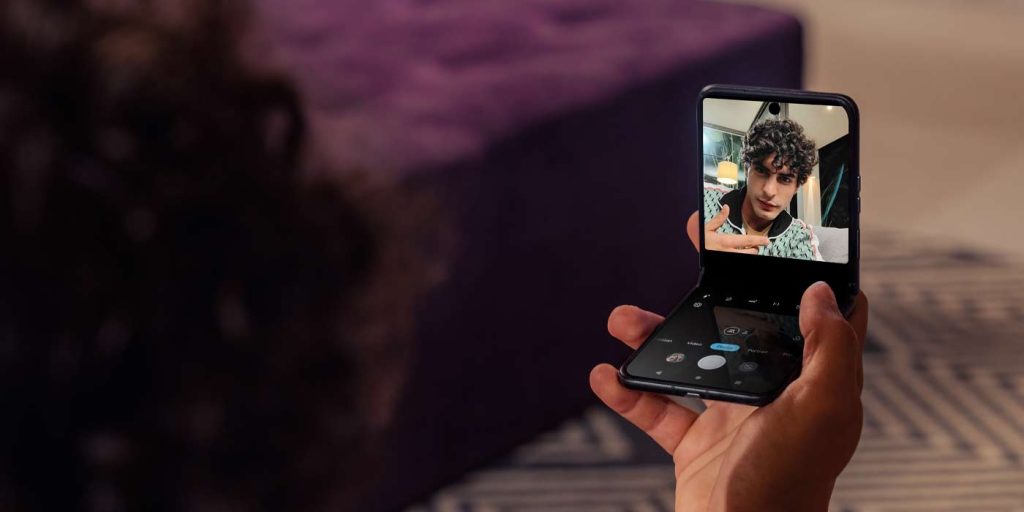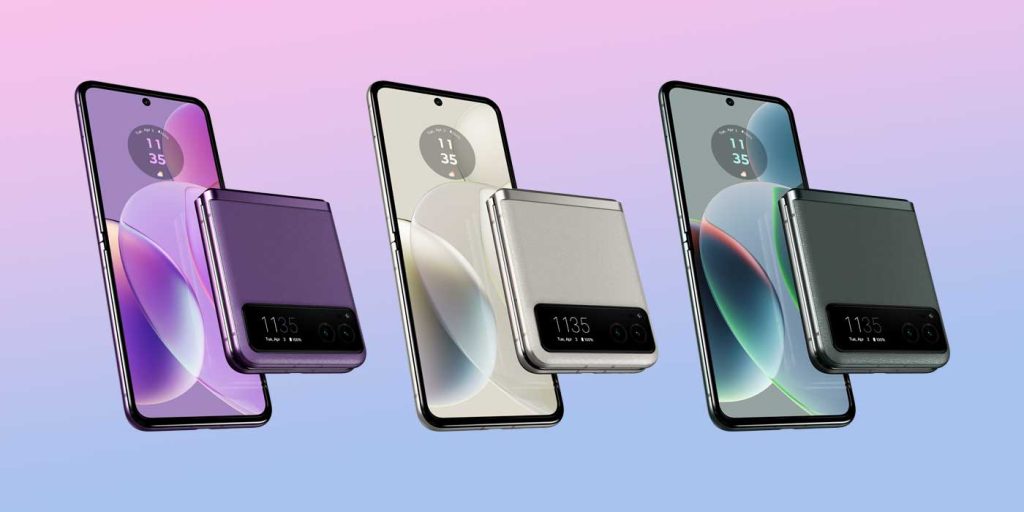
Making its debut as one of the first foldables in 2023, the Motorola Razr packs a pOLED display in a clamshell body cased in some seriously nice vegan leather paneling. As the little brother to the Razr+, this device isn’t going to lay its claim to power and performance, but man, does it look good.
It would seem Motorola has been paying attention to the foldable market and what customers are actually after. The idea is nice and has a unique aspect to it, but foldables are just too expensive in the current landscape. While the Razr+ can’t market itself as an affordable device, the Razr apparently can.
Internally, the Motorola Razr runs a Snapdragon 7 Gen 1 SoC. That’ll be paired with a refreshing 8GB of RAM and 128GB internal storage. Out of the box, the device is going to be running Android 13. If Motorola can keep to the same formula it has implemented with the Edge+ and ThinkPhone, there will be no issues on the software side. Another important takeaway is that the company will be backing the Razr with three years of Android OS updates and four years of bimonthly security patches.
When opened up via Motorola’s teardrop hinge, users will be looking at a crisp 6.9-inch pOLED display that comes in at 2640 x 1080. The LTPO display can handle HDR10+ content and clocks in at up to 144Hz. Though the display is the same one found on the Razr+, the refresh rate is limited to 144 by the Snapdragon 7 Gen 1. The Razr+, by contrast, is able to handle up to 165Hz.
Of course, we’re not only dealing with one display. The Razr comes equipped with an external OLED display that’s reminiscent of the Galaxy Z Flip 4. The panel has a display resolution of 194 x 368 packed up under a Gorilla Glass Victus panel. The 1.5-inch external panel is very much meant to be a notification banner and act as an access point to simplified apps and tools like Google Maps. Even still, extremely useful.
With a battery capacity of 4,200mAh, the Razr should be able to last a full day or maybe more – it really comes down to how efficient Motorola has made the clamshell foldable. We’ve seen impressive battery lives from lower-capacity devices, so it wouldn’t be a stretch to expect the Razr to be a competent daily device. The Razr also comes with the ability to charge via 30W TurboPower and 5W wireless charging.

Within that external display is a set of two cameras. One is the main sensor at 64MP, while the other is a 13MP wide lens. The internal display holds a 23MP selfie camera, though foldable ar renowned for allowing users to take selfies on the external cameras with relative ease. We expect the Razr to be no different in that regard.
Motorola is marketing the 2023 Razr as “meaningfully affordable.” Assuming that means users won’t need to sacrifice quality, the brand seems to have done a fine job. The phone itself packs a lot of great components, but the design is something to note as well.
The Razr is encased in vegan leather paneling with no other texture choices available. In total, there are three color options: Sage Green, Vanilla Cream, and Summer Lilac. These contrast highly with the Razr+’s lineup of vibrant, metallic colorways. Personally, we think Sage Green looks like a killer option, and the idea of each device taking on vegan leather paneling is quite appealing.

Motorola hasn’t announced pricing for the Razr yet, though we know the Razr+ will come in at $999. Assuming the Razr will be $200 cheaper – based on leaked information and foreign pricing models with respect to varying market valuations – we can assume that the price will sit somewhere around $800 or possibly less. Motorola’s “meaningfully cheaper” mantra leads us to believe the foldable will come in at a reasonable price for consumers.
The company also hits vague notes, only announcing that the Motorola Razr will be available “in the coming months.” Originally, it was hoped that we would see the device released in June, though that clearly won’t be the case.
FTC: We use income earning auto affiliate links. More.


Comments